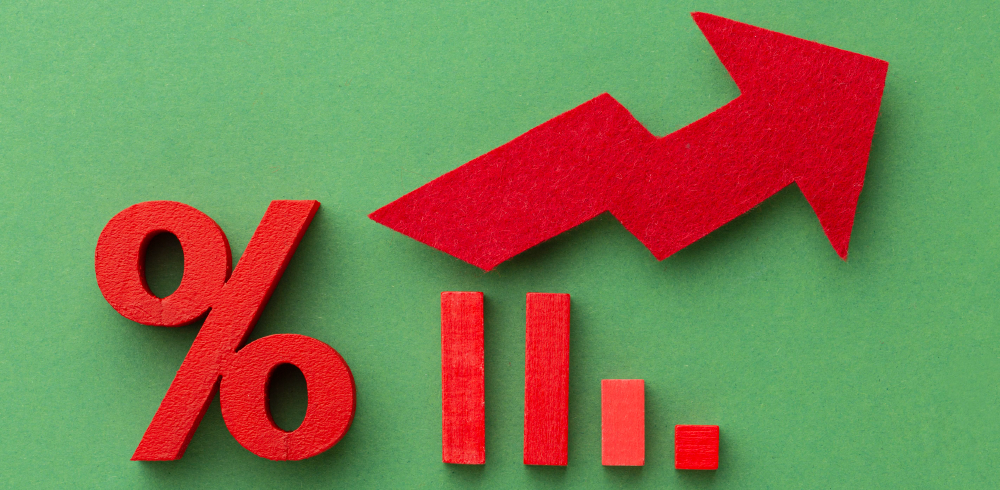The repo rate is a popular term you may have heard when discussing loans, interest rates, or the economy. But what exactly is it? In simple terms, the repo rate is the rate at which the central bank, like the Reserve Bank of India (RBI), lends money to commercial banks. It is important as it affects loan interest rates, inflation, and overall economic growth. Let’s understand more about what is repo rate, reverse repo rate, the effect of an increase in repo rates, and more in this guide.
What is the Repo Rate?
Also called the repurchase rate, the repo rate is the interest rate at which the central bank lends money to other banks. Banks often need extra money for short periods, and they borrow this from the central bank by selling government securities. Later, they buy back these securities at a higher price by paying interest, which is called the repo rate.
How Does Repo Rate Work?
The repo rate is used by central banks to control how much money is available in the economy. If prices of goods in the market are high, the central bank raises the repo rate to make borrowing more expensive. This reduces the amount of money that banks can lend, thereby, slowing down spending.
On the other hand, if the economy needs a boost, the central bank lowers the repo rate. This makes borrowing cheaper for banks, which in turn offer loans at lower interest rates to customers.

Why is Repo Rate Important?
Here are the major reasons why repo rates are important:
- When inflation is high, increasing the repo rate helps slow it down by making loans more expensive.
- If the repo rate goes up, banks raise loan interest rates, which makes it costlier to borrow money.
- A lower repo rate helps the economy grow by encouraging borrowing and spending.
- Repo rates also help banks maintain enough cash to meet their short-term needs.
- A higher repo rate can lead to better returns on savings as banks increase deposit rates.
Repo Rate vs. Reverse Repo Rate
Now, let’s understand the major differences between repo rates and reverse repo rates:
| Aspect | Repo Rate | Reverse Repo Rate |
|---|---|---|
| Definition | The rate at which the central bank lends to commercial banks | The rate at which commercial banks lend to the central bank |
| Purpose | To increase the money supply in the market | To decrease the supply in the market |
| Impact on economy | Increases borrowing, controls inflation | Reduces borrowing, controls liquidity |
Also Read – What is NPA
How Changes in Repo Rate Affect You
The effects of repo rates include:
- Loan EMIs May Rise: If the repo rate goes up, your loan EMIs (monthly payments) may become higher due to increased interest rates.
- Higher Savings Rates: When the repo rate increases, banks may offer higher interest rates on savings accounts and fixed deposits.
- Home Loans Get Expensive: A rise in the repo rate can make home loans more costly.
- Personal Loan Costs: Higher repo rates mean personal loans would have higher interest rates.
- Credit Card Interest: Credit card interest rates may go up when the repo rate is increased.
Also Read – RBI Rules & Regulation for Loan Recovery
Conclusion
This is what the repo rate is and how the repo rate works. Make sure you understand its significance so that you know why loan interest rates go up and down and how you can benefit from the fluctuations.
Now, if you are looking to get quick access to funds, consider CASHe as it offers instant personal loans even when repo rates fluctuate. With competitive interest rates and good repayment schedules, the CASHe app is a great option for managing unexpected expenses.
Download the CASHe app today!
FAQs
What is the current repo rate?
The current repo rate set by the central bank is 6.50%.
What is the current reverse repo rate?
The current reverse repo rate at which the central bank borrows from commercial banks is 3.35%.
Who decides the repo rate?
The central bank, like the Reserve Bank of India (RBI), decides the repo rate to manage the economy.
Why is Repo Rate Important?
Repo rates help control inflation, manage interest rates on loans, and influence economic growth.
What is BPS or Basis Point?
BPS (basis point) is a unit of measurement for changes in interest rates. One basis point equals 0.01%, so a 50 BPS increase means a 0.50% rise in rates.
Popular Searches
What Is EMI | What Is a Loan | What Is Credit Control | FOIR | CIBIL Score vs Experian Score | CASA Full Form | Top Loan Companies | Best Personal Finance Blogs | Loan Repayment | What Is Small Loan








